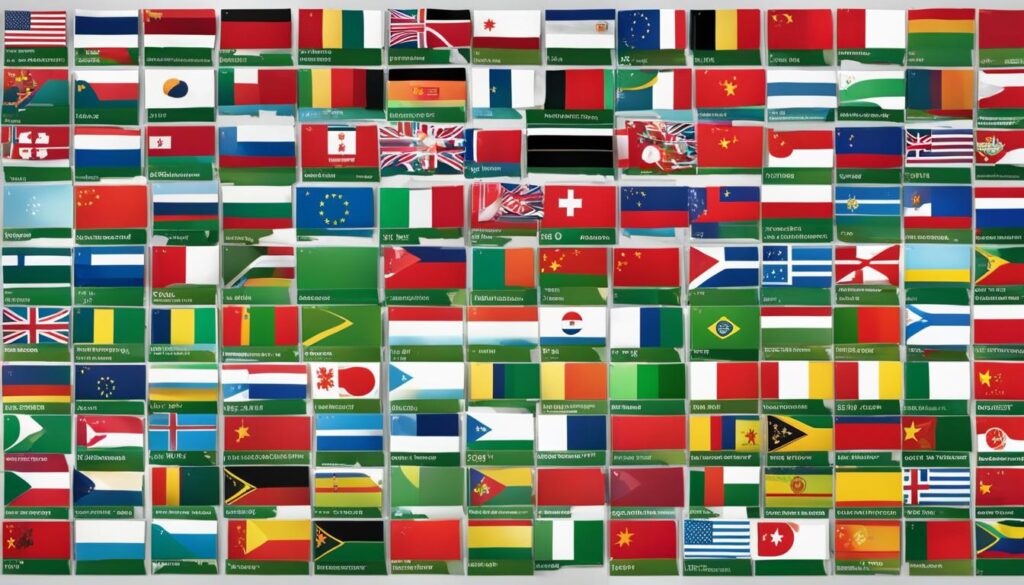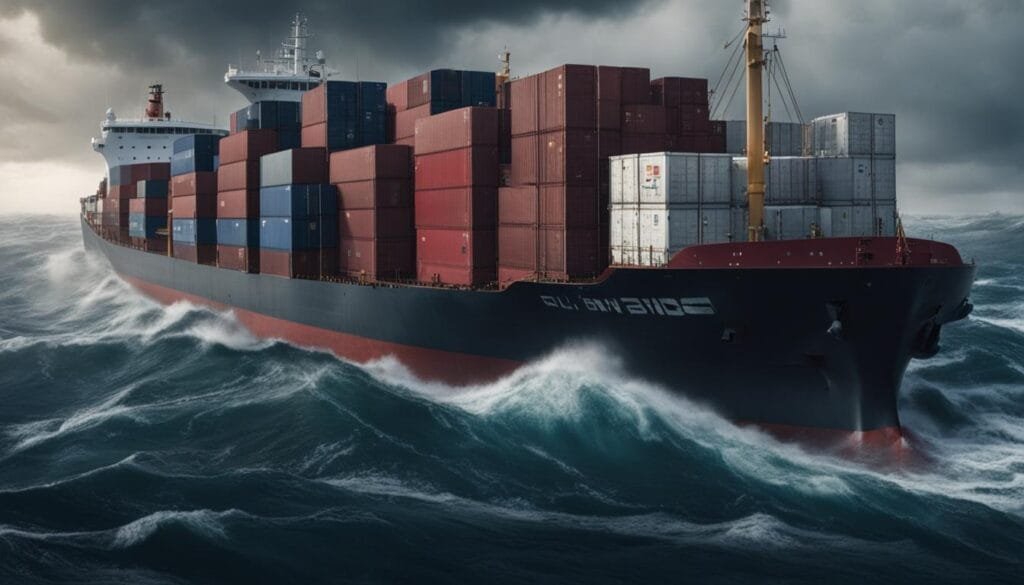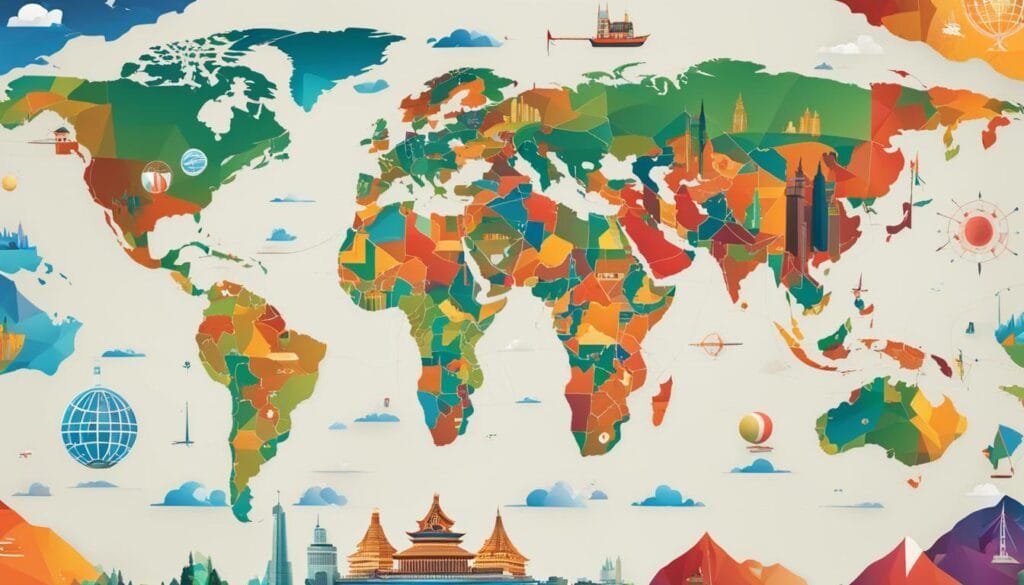The global economy is constantly evolving, shaped by various factors such as global economic development, changing trends, and financial growth. Understanding these dynamics is crucial for individuals and businesses looking to create wealth and thrive in an ever-changing world.
With the rebound of the global economy after the COVID-19 pandemic, it’s essential to take a closer look at the underlying health and resilience of the global economy. Exploring international trends and examining the sources of wealth creation can provide valuable insights into the future prospects of financial growth.
The rise of the global balance sheet is an important topic that sheds light on the changing landscape of wealth creation. A recent report titled “The rise of the global balance sheet” highlights key findings that challenge traditional notions of wealth accumulation. It reveals that the growth of net worth no longer follows the pattern of GDP growth, signaling a paradigm shift in the sources of wealth creation. Intangible assets like software and intellectual property now have a significant impact on the global economy, altering the dynamics of financial growth.
Additionally, the report emphasizes the dominance of real estate as the primary investment choice due to a shortage of high-yield opportunities. This trend raises important questions about the future of global wealth creation and the need for diversification in investment strategies.
Key Takeaways:
- Global economic development plays a crucial role in shaping wealth creation.
- The growth of net worth no longer aligns with GDP growth, indicating a paradigm shift in sources of wealth.
- Intangible assets like software and intellectual property have a significant impact on the global economy.
- Real estate has become the primary investment choice due to the shortage of high-yield opportunities.
- Diversification in investment strategies is vital for future financial growth.
The Global Balance Sheet and Wealth Distribution
To truly understand the global economy and the factors driving wealth creation, we must delve into the intricacies of the global balance sheet and its impact on wealth distribution. The balance sheet consists of various components, including the real economy balance sheet, the financial balance sheet, and the financial sector balance sheet. Collectively, these components contribute to approximately $500 trillion, which is roughly six times the global GDP.
The real economy balance sheet encompasses tangible assets such as machinery, infrastructure, and intellectual property. On the other hand, the financial balance sheet comprises financial assets like stocks, bonds, and pension funds. Financial institutions play a critical role in creating and intermediating these financial assets, which are accompanied by an equivalent level of liabilities.
It is important to note that net worth, which represents the difference between assets and liabilities, is a reflection of real assets. In recent years, the value of these assets has surged to nearly 50% higher than the long-run average relative to income. However, it is crucial to consider that liabilities have also shown significant growth, particularly in the form of debt.
“The global balance sheet is a complex interplay of real and financial assets, with net worth serving as a measure of wealth. The values of these assets and liabilities have far-reaching implications and provide valuable insights into the state of the global economy.”
Examining the distribution of wealth across the globe reveals substantial variations and disparities. The global balance sheet has witnessed remarkable growth over the past two decades, with assets and net worth tripling to reach an astounding $1,540 trillion in 2020. However, per capita net worth varies significantly across economies, ranging from $46,000 in Mexico to $351,000 in Australia.
Furthermore, wealth distribution within countries is highly unequal, with the top 10% of households owning a disproportionate share of assets. For instance, in the United States, the wealthiest 10% of households possess a staggering 71% of the country’s wealth, while the bottom 50% hold a meager 1.5%. These disparities highlight the challenges associated with wealth distribution and underscore the urgent need for inclusive economic policies and strategies.
| Economy | Per Capita Net Worth (USD) |
|---|---|
| Mexico | 46,000 |
| Australia | 351,000 |
Global Wealth Trends and Variations
As we delve deeper into the analysis of the global balance sheet and wealth distribution, it becomes evident that the past two decades have witnessed significant growth in global wealth. The total assets and net worth have tripled, soaring to a staggering $1,540 trillion in 2020. However, this abundance of wealth is not evenly distributed across economies.
When we examine per capita net worth, we observe substantial variations across countries. For instance, Mexico has a per capita net worth of $46,000, while Australia boasts a significantly higher figure of $351,000. These disparities emphasize the diverse economic landscapes and opportunities that exist worldwide.
China emerges as a major driver of global wealth growth, contributing to a remarkable 50% of the overall increase. The country’s rapid economic development and burgeoning middle class have played a pivotal role in this transformation. Nevertheless, it’s crucial to note that wealth distribution remains highly skewed.
In the United States, for example, the top 10% of households possess a staggering 71% of the country’s wealth, leaving the remaining 50% of households with a mere 1.5% share. This unequal distribution raises questions about the challenges and implications of wealth disparity and highlights the urgent need for inclusive economic policies to address these issues.

The Need for Inclusive Economic Policies
In the face of these significant variations in global wealth, it becomes imperative to implement inclusive economic policies that can bridge the gap between the affluent and the less privileged. Such policies should focus on creating equal opportunities for wealth creation and distribution, enabling individuals and households across all income brackets to partake in the benefits of economic growth.
By addressing wealth disparities and promoting inclusive growth, economies can unlock the potential of their entire population, fostering social stability and sustainable development. The challenge lies in finding the right balance between rewarding wealth creation and ensuring that the benefits of economic growth are shared equitably.
Summary and Outlook
In summary, the analysis of global wealth trends and variations highlights the heterogeneous nature of wealth distribution across countries. While some nations have witnessed significant growth and improved living standards, others continue to grapple with wealth inequality.
As we move forward, it is essential for policymakers and economic leaders to strive for inclusive economic policies that promote broad-based wealth creation. By doing so, we can not only address the inherent imbalances in wealth distribution but also foster a more sustainable and equitable global economy.
Assets and Liabilities Across Economic Sectors
When examining global wealth, it is essential to understand the distribution of assets and liabilities across different economic sectors. Household wealth, which plays a significant role in the overall global balance sheet, consists of both real and financial assets. Real assets, such as housing, make up nearly half of household net worth. On the other hand, financial assets, including pension assets, deposits, and equities, also contribute to household wealth.
In addition to households, the public sector, nonfinancial corporations, and financial corporations also hold assets and liabilities that contribute to the global balance sheet. The public sector owns public buildings, infrastructure, land, and natural resources, which are essential for providing public services and driving economic development. Nonfinancial corporations own productive assets like machinery, factories, and intangibles, with these assets playing a crucial role in driving economic output. Financial corporations, meanwhile, hold and intermediate financial assets and liabilities from various sectors, acting as key intermediaries in the global financial system.
To provide a comprehensive understanding of the assets and liabilities across these economic sectors, let’s take a closer look at the following table:
| Real Assets | Financial Assets | |
|---|---|---|
| Household Sector | Housing | Pension assets, deposits, equities |
| Public Sector | Public buildings, infrastructure, land, natural resources | – |
| Nonfinancial Corporations | Machinery, factories, intangibles | – |
| Financial Corporations | – | Financial assets (stocks, bonds, derivatives) |
This table provides a snapshot of the assets held by different economic sectors. It is important to note that the table is not exhaustive and only represents a subset of the assets and liabilities that contribute to the overall global balance sheet. However, it highlights the diversity of assets held across different sectors and their importance in driving economic growth and wealth creation.

Understanding the Significance
By analyzing the assets and liabilities across economic sectors, we can gain insights into the overall health and resilience of the global economy. The data presented in the table emphasizes the critical role played by households, the public sector, nonfinancial corporations, and financial corporations in wealth creation and economic development. It also underscores the importance of balanced and inclusive economic policies to ensure sustainable growth and equitable distribution of wealth.
As we continue to navigate the changing dynamics of wealth creation and global economic development, understanding the interconnectedness of assets and liabilities across sectors becomes increasingly crucial. By monitoring these factors and implementing appropriate policies, governments, businesses, and individuals can work towards creating a more stable and prosperous global economy.
Conclusion
The analysis of the global balance sheet and wealth distribution provides valuable insights into the current state of the global economy. It reveals a paradigm shift in sources of wealth and highlights the need for inclusive economic policies. As the global economy rebounds from the COVID-19 pandemic, it is crucial to find new sources of wealth and rebalance the global economy for sustainable economic development and inclusive growth.
Understanding the global economic landscape is essential for individuals and businesses to make informed decisions and strategies. The rise of intangible assets, such as software and intellectual property, has played a significant role in wealth creation. Real estate has become a primary investment choice due to a shortage of high-yield opportunities. These trends shape the future prospects of global economic development and financial growth.
Policymakers and business leaders must address the challenges posed by wealth distribution. The top 10% of households own a significant portion of global wealth, while the bottom 50% own comparatively less. This uneven distribution raises important questions about equity and social mobility. Inclusive economic policies and initiatives are necessary to ensure that the benefits of wealth creation are shared more widely.
By embracing these insights and taking proactive measures, individuals and businesses can navigate the changing dynamics of wealth creation. The global economy offers new opportunities for growth and prosperity, but it also requires careful planning and adaptable strategies. As the world continues to recover and reshape itself, it is crucial to stay informed and engaged in the global economic development landscape.
FAQ
What does the global balance sheet include?
The global balance sheet includes the real economy balance sheet, the financial balance sheet, and the financial sector balance sheet.
What are the components of the real economy balance sheet?
The real economy balance sheet consists of real assets like machinery, infrastructure, and intellectual property.
What are the components of the financial balance sheet?
The financial balance sheet includes financial assets like stocks, bonds, and pension funds.
Who creates and intermediates financial assets?
Financial institutions create and intermediate financial assets.
How has the global balance sheet grown over the past two decades?
The assets and net worth have tripled, reaching $1,540 trillion in 2020.
What is the role of China in global wealth growth?
China has been the major driver of global wealth growth, accounting for 50% of the increase.
How is wealth distributed globally?
Wealth distribution is highly uneven, with the top 10% of households owning a significant portion of wealth.
What are the key components of household wealth?
Household wealth comprises both real and financial assets, with real assets like housing making up almost half of household net worth.
What assets do nonfinancial corporations own?
Nonfinancial corporations own productive assets like machinery, factories, and intangibles.
What insights does the analysis of the global balance sheet and wealth distribution provide?
The analysis provides insights into the current state of the global economy and highlights the need for inclusive economic policies.
What Steps Can Be Taken to Achieve Global Economic Equality?
To achieve striving for global economic equality, various steps can be taken. Firstly, governments should focus on implementing policies that promote inclusive economic growth and reduce income disparities. This includes providing equal educational opportunities, encouraging entrepreneurship, and investing in infrastructure development. Additionally, promoting fair trade practices and ensuring access to financial services for all nations can contribute to leveling the economic playing field. Lastly, international cooperation and partnerships can foster economic equality by addressing issues such as debt relief, technology transfers, and sustainable development initiatives.


Pingback: Innovate Your Income: Embracing Global Financial Innovations! – Straight Fire Money